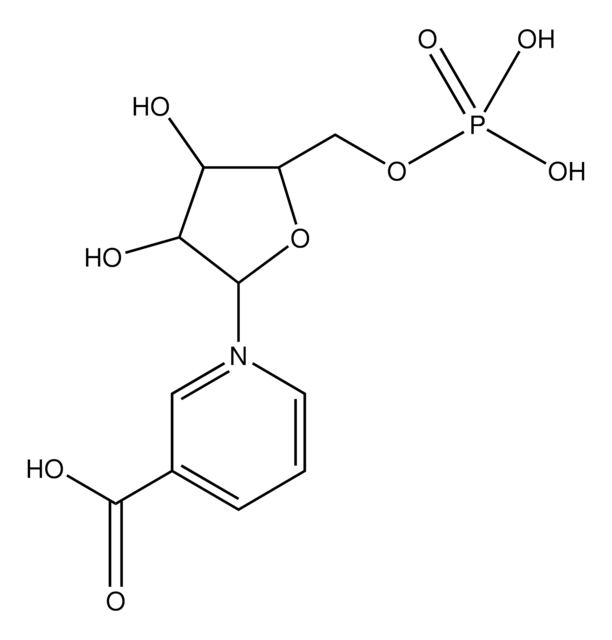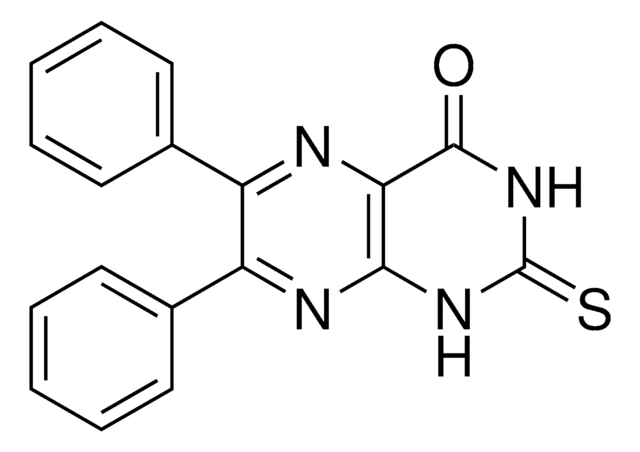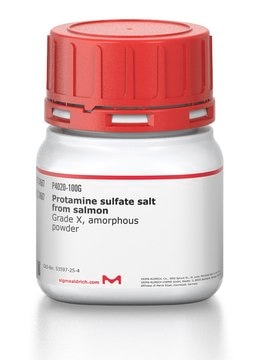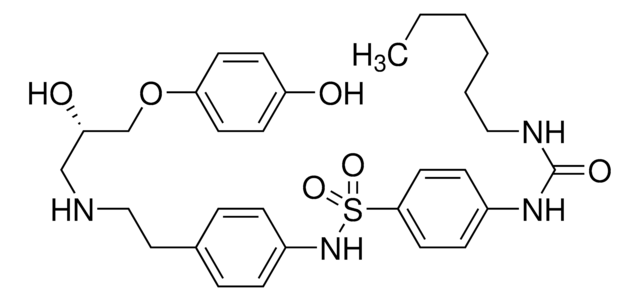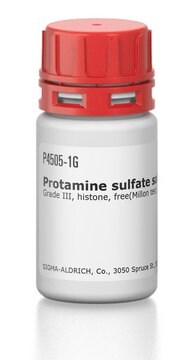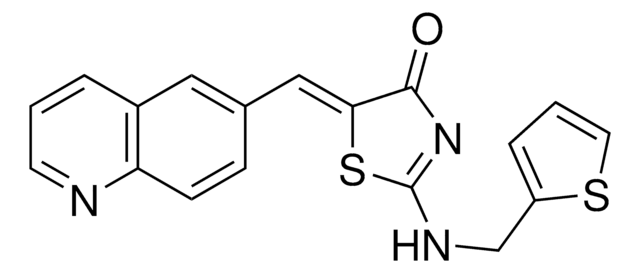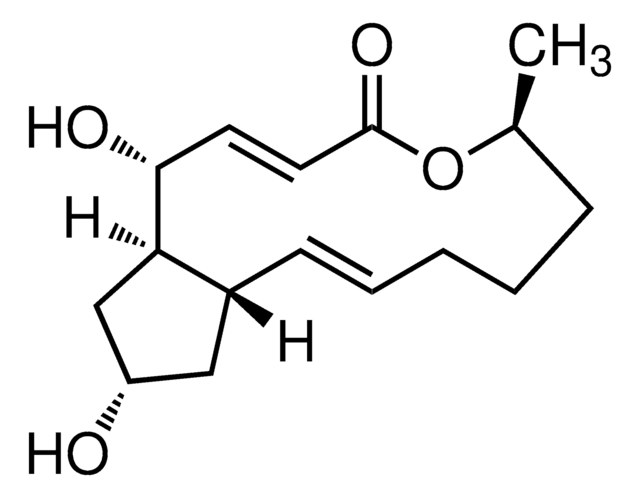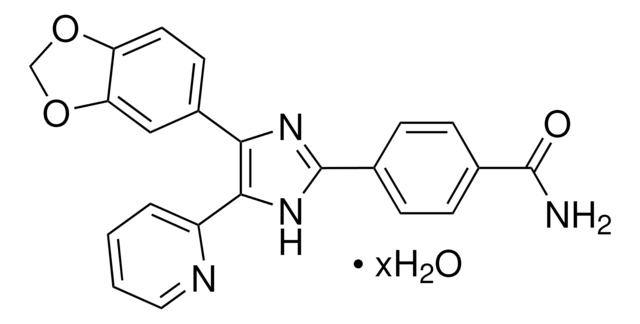R9782
RS-1
≥98% (HPLC)
Sinónimos:
3-[(benzylamino)sulfonyl]-4-bromo-N-(4-bromophenyl)benzamide, 4-Bromo-N-(4-bromophenyl)-3-[[(phenylmethyl)amino]sulfonyl]-benzamide, RAD51-stimulatory compound 1
About This Item
Productos recomendados
Quality Level
assay
≥98% (HPLC)
form
powder
color
off-white to light tan
solubility
DMSO: ≥10 mg/mL
storage temp.
room temp
SMILES string
Brc1ccc(NC(=O)c2ccc(Br)c(c2)S(=O)(=O)NCc3ccccc3)cc1
InChI
1S/C20H16Br2N2O3S/c21-16-7-9-17(10-8-16)24-20(25)15-6-11-18(22)19(12-15)28(26,27)23-13-14-4-2-1-3-5-14/h1-12,23H,13H2,(H,24,25)
InChI key
SWKAVEUTKGKHSR-UHFFFAOYSA-N
Application
- as a homology-directed repair (HDR) agonist to study its effects on in human hematopoietic stem/progenitor cells (HSPCs)
- as HDR agonist to analyze its effects on DNA repair modulation in human induced pluripotent stem (iPS) cells
- as RAD51 agonist to study its effects on double-stranded break repair
Biochem/physiol Actions
Storage Class
11 - Combustible Solids
wgk_germany
WGK 3
flash_point_f
Not applicable
flash_point_c
Not applicable
Certificados de análisis (COA)
Busque Certificados de análisis (COA) introduciendo el número de lote del producto. Los números de lote se encuentran en la etiqueta del producto después de las palabras «Lot» o «Batch»
¿Ya tiene este producto?
Encuentre la documentación para los productos que ha comprado recientemente en la Biblioteca de documentos.
Los clientes también vieron
Nuestro equipo de científicos tiene experiencia en todas las áreas de investigación: Ciencias de la vida, Ciencia de los materiales, Síntesis química, Cromatografía, Analítica y muchas otras.
Póngase en contacto con el Servicio técnico
